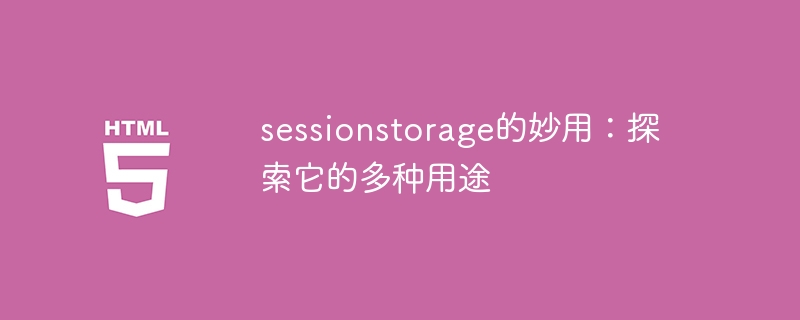

The wonderful uses of sessionStorage: to explore its many uses, specific code examples are required
Introduction:
In web development, we often need to store on the client side Data to share between different pages or maintain state within the same page. sessionStorage is a very useful tool that can help us achieve these goals. This article will introduce the various uses of sessionStorage and demonstrate its powerful functions through specific code examples.
// 用户登录成功后存储用户信息
var user = {
name: "John Doe",
age: 30,
email: "john@example.com"
};
sessionStorage.setItem("user", JSON.stringify(user));
// 在其他页面中读取用户信息
var userJSON = sessionStorage.getItem("user");
var user = JSON.parse(userJSON);
console.log(user.name); // 输出 John Doe// 发起API请求并将结果存储在sessionStorage中
if (!sessionStorage.getItem("data")) {
fetch("https://api.example.com/data")
.then(response => response.json())
.then(data => {
sessionStorage.setItem("data", JSON.stringify(data));
})
.catch(error => console.log(error));
}
// 在其他页面中读取缓存的API结果
var dataJSON = sessionStorage.getItem("data");
var data = JSON.parse(dataJSON);
console.log(data); // 输出API请求的结果// 存储用户选择和设置
var theme = "dark";
var fontSize = "16px";
sessionStorage.setItem("theme", theme);
sessionStorage.setItem("fontSize", fontSize);
// 在页面加载时应用用户选择和设置
window.onload = function() {
var theme = sessionStorage.getItem("theme");
var fontSize = sessionStorage.getItem("fontSize");
// 应用用户选择和设置
document.body.style.backgroundColor = (theme === "dark") ? "#000" : "#fff";
document.body.style.fontSize = fontSize;
};Conclusion:
sessionStorage is a very useful tool that can help us store data on the client side and share or maintain state between different pages. This article introduces the various uses of sessionStorage and gives specific code examples. By using sessionStorage, we can improve user experience, reduce unnecessary network requests and better manage user choices and settings. I hope this article will help you rationally use sessionStorage in web development.
The above is the detailed content of Discover the potential of sessionstorage: explore its versatile application areas. For more information, please follow other related articles on the PHP Chinese website!




